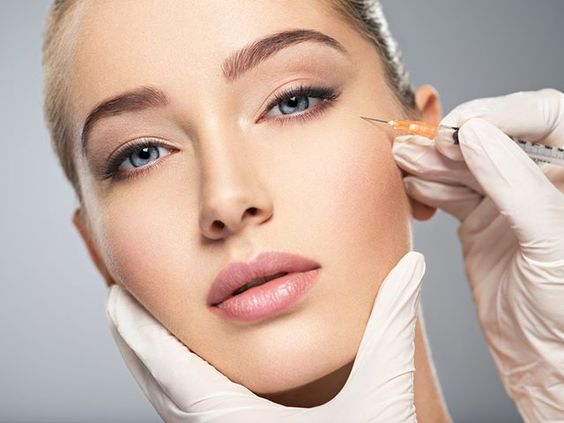
Botox and fillers have been around for years but we learnt that the difference between the 2 are not always immediately clear. So we’ve put together a guide to explain the differences between them so that you can work out which you would likely prefer to have. Of course you should always consult with an experienced injector and discuss which (or both) is more suitable for the improvements you want to make!
Botox Vs Fillers
Botox (or Botulinum toxin) is a solution that is injected in very small, measured doses into specific facial muscles. By blocking nerve signals in the injected muscle(s), the resulting effect is temporary paralysis i.e. movement of these muscles of the face are restricted, resulting in softening or even disappearance of wrinkles. A typical Botox injection of smaller muscles such as those in the forehead, or outside the eyes last approximately 3 to 4 months. Obviously the higher the dose, the more long-lasting the treatment, but also the more “frozen” the look!
Botox is actually a purified form of the botulinum toxin obtained from bacteria. Fillers, on the other hand, are material that are injected beneath the skin for rejuvenation. Depending on the type of filler material used, rejuvenation objectives such as plumping up hollow areas of the face (thin lips, sunken undereye hollows, hollow cheeks, temples, forehead, recessed acne scars, deep permanent wrinkles etc.) The filler material of choice today is hyaluronic acid, a naturally occurring substance in our bodies.
Age Reversal Fillers
The normal aging process of the skin sees a drop in production of collagen and elastin. Structural changes of the face results in loss of volume overall, which is why reaching for your anti-aging serums and creams will not help. Filling of hollow areas such as the cheeks adds volume and smoothens out fine lines and wrinkles. Fillers thus have an age-reversal effect, and mild filler lifts are increasingly popular lunchtime procedures.

Fillers can also be used to sharpen certain features. For example, Asian Chinese faces usually crave projection so nose fillers and chin fillers are popular.

Which Filler Should You Use?
Hyaluronic acid (HA) fillers are the most commonly used today, and for a good reason. These are natural dermal fillers because hyaluronic acid is natural to our bodies. In fact it is present throughout the body and is a chief molecule of water, serving as our skin’s “internal moisturizer”. HA fillers are temporary lasting between 6 to 18 months, depending on type and they are gradually broken down by the body. “Harder” fillers tend to last longer and are used for lifting and sculpting such as the nose and chin, or soft and watery – skinboosters injected directly into the skin for a plump, dewy effect.
HA fillers come in different brands. In Singapore, Juvederm, Restylane and Boletero are the most popular. Each filler has its own characteristic so most doctors have different filler preferences for different purposes!
